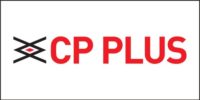 In today’s dynamic environment, businesses and communities are increasingly vulnerable to natural disasters. From hurricanes, earthquakes, and floods to wildfires, these events can wreak havoc on infrastructure, disrupt operations, and lead to significant economic losses. For organizations to mitigate the devastating impacts of such disasters, the need for robust disaster recovery (DR) and incident response strategies has never been more critical. Disaster recovery involves the process of planning, preparing, and executing actions to ensure the rapid restoration of operations and business continuity post-disaster, while incident response focuses on the immediate reaction to an event.
In today’s dynamic environment, businesses and communities are increasingly vulnerable to natural disasters. From hurricanes, earthquakes, and floods to wildfires, these events can wreak havoc on infrastructure, disrupt operations, and lead to significant economic losses. For organizations to mitigate the devastating impacts of such disasters, the need for robust disaster recovery (DR) and incident response strategies has never been more critical. Disaster recovery involves the process of planning, preparing, and executing actions to ensure the rapid restoration of operations and business continuity post-disaster, while incident response focuses on the immediate reaction to an event.
This article aims to provide an in-depth understanding of the importance of disaster recovery in the context of natural disasters, outlining the essential steps businesses should take to protect assets, data, and critical operations when nature strikes.
- Why Disaster Recovery is Essential in a Natural Disaster
Natural disasters are unpredictable and can lead to widespread destruction. Without a comprehensive disaster recovery plan, the aftermath of such events could result in prolonged downtime, massive data loss, operational chaos, and, in some cases, permanent closure of businesses. Disaster recovery ensures that businesses can recover and return to normalcy as quickly as possible by addressing the following critical needs:
- Minimizing Downtime: Natural disasters can cause system outages, leading to operational stoppages. DR strategies focus on minimizing this downtime by ensuring that critical systems and services can be restored quickly.
- Protecting Data: Data is often the lifeblood of businesses, and in the wake of a disaster, data loss can cripple operations. DR plans ensure that data backups are stored offsite or in the cloud, providing a safeguard against data corruption or destruction.
- Ensuring Business Continuity: DR is closely tied to business continuity planning (BCP). A well-executed disaster recovery plan ensures that the core functions of the business can continue even amidst disruptions, allowing businesses to maintain customer trust and regulatory compliance.
- Components of a Strong Disaster Recovery Plan for Natural Disasters
A disaster recovery plan is more than just a blueprint for restoring IT systems; it encompasses a comprehensive approach that addresses all critical aspects of business functionality in the event of a disaster. Below are key components of an effective DR plan:
- Risk Assessment and Business Impact Analysis (BIA): The first step in DR planning involves assessing the risks posed by various natural disasters, such as earthquakes, floods, or hurricanes. A BIA helps identify the critical systems, applications, and processes that must be prioritized for recovery in the event of a disaster.
- Data Backup and Replication: Ensuring that data is backed up regularly and replicated to offsite locations is a fundamental part of disaster recovery. Businesses should leverage cloud solutions for redundancy, ensuring access to up-to-date information after a disaster.
- Recovery Time Objectives (RTO) and Recovery Point Objectives (RPO): RTO specifies the maximum acceptable amount of downtime before the restoration of systems, while RPO defines the maximum age of data that can be recovered after a disaster. These metrics are crucial for designing the recovery process and prioritizing which services or systems should be restored first.
- Incident Response Plan: An incident response plan should detail the immediate actions that need to be taken during and after a natural disaster, focusing on employee safety, communication protocols, and containment of the incident to minimize damage.
- Communication Plan: Communication during a disaster is vital for coordinating recovery efforts and keeping stakeholders informed. DR plans must establish clear communication channels with employees, customers, partners, and emergency services.
- Testing and Regular Updates: A disaster recovery plan is only effective if it is regularly tested and updated. Simulation drills should be conducted periodically to ensure the plan’s viability, and any identified weaknesses should be addressed promptly.
- Incident Response and Its Importance in Disaster Recovery
While disaster recovery deals with restoring operations post-disaster, incident response focuses on the immediate management of an event. In the case of a natural disaster, incident response ensures that immediate steps are taken to safeguard human life, protect critical assets, and minimize damage. Here’s why incident response is a vital part of disaster recovery:
- Safety First: The primary objective during a natural disaster is the safety of personnel. An incident response plan outlines evacuation procedures, emergency contacts, and safety protocols to ensure all individuals can be accounted for and protected during a crisis.
- Asset Protection: In the face of impending natural disasters, quick actions may be needed to protect physical and digital assets. This could include moving critical equipment to safer locations, enabling backup systems, or shutting down vulnerable infrastructure to prevent further damage.
- Limiting Business Impact: A timely incident response can mitigate the broader business impact of a natural disaster. Rapid communication and the activation of contingency measures can limit disruption to operations, preserving both revenue and reputation.
- Facilitating Faster Recovery: Incident response lays the groundwork for disaster recovery by stabilizing the situation. Once the immediate threat is addressed, recovery teams can begin working on restoring operations, guided by the established DR plan.
- Natural Disasters and Data: The Role of Technology in Disaster Recovery
In an era where businesses are increasingly reliant on digital systems and cloud-based infrastructures, the role of technology in disaster recovery cannot be overstated. Technology has transformed how businesses approach disaster recovery, offering more resilient and flexible solutions for addressing the impacts of natural disasters.
- Cloud Computing and Disaster Recovery-as-a-Service (DRaaS): Cloud computing has revolutionized DR, allowing businesses to store data offsite and replicate their critical applications in real time. DRaaS ensures that even if a business’s primary data center is destroyed, operations can quickly switch to cloud environments without substantial downtime.
- Automation and Orchestration: Advanced disaster recovery solutions use automation to streamline the recovery process. For instance, automated failover systems can switch workloads to backup servers, reducing the need for manual intervention during the recovery phase.
- AI and Predictive Analytics: Leveraging AI and predictive analytics, businesses can forecast potential disruptions from natural disasters based on weather patterns, seismic activity, or other environmental data. This allows them to activate their DR plans proactively, minimizing the impact on operations.
- Redundant Data Centers: For businesses with mission-critical operations, having redundant data centers in geographically diverse locations is crucial. This ensures that if one facility is impacted by a natural disaster, the other can continue to support operations.
- Steps for Implementing an Effective Disaster Recovery and Incident Response Plan
Implementing a disaster recovery plan tailored for natural disasters involves several strategic steps:
Step 1: Conduct Risk Assessments: Evaluate the likelihood of different natural disasters affecting your business based on geographic location and infrastructure vulnerabilities.
Step 2: Prioritize Critical Systems: Identify the systems and applications that are vital to business continuity and develop recovery strategies around these priorities.
Step 3: Invest in Redundancy: Ensure that your data and infrastructure have redundancy, whether through cloud services, offsite backups, or secondary data centers.
Step 4: Develop a Clear Incident Response Plan: Map out immediate response protocols for different disaster scenarios, focusing on personnel safety, damage mitigation, and asset protection.
Step 5: Regularly Test and Update: Disaster recovery plans should be dynamic and adaptable. Regular testing will help identify potential gaps, and updating plans as new technologies or threats emerge is crucial.
- Building Organizational Resilience: Integrating DR into the Corporate Culture
 Disaster recovery is not a one-off process—it should be integrated into an organization’s culture. By building resilience, businesses ensure that they are not only able to recover from natural disasters but also bounce back stronger. Organizational resilience involves training employees on disaster protocols, fostering a culture of preparedness, and promoting accountability at every level.
Disaster recovery is not a one-off process—it should be integrated into an organization’s culture. By building resilience, businesses ensure that they are not only able to recover from natural disasters but also bounce back stronger. Organizational resilience involves training employees on disaster protocols, fostering a culture of preparedness, and promoting accountability at every level.
The unpredictability of natural disasters underscores the critical need for robust disaster recovery and incident response plans. Whether it’s safeguarding data, minimizing downtime, or protecting employees, disaster recovery ensures that businesses can survive and thrive despite natural adversities.
By understanding the key components of disaster recovery and the importance of incident response, organizations can fortify themselves against the challenges of natural disasters, ensuring operational continuity and long-term sustainability.
In this era of increasing environmental unpredictability, businesses must recognize that their ability to recover from a disaster is directly tied to the strength and sophistication of their disaster recovery and incident response strategies.























































